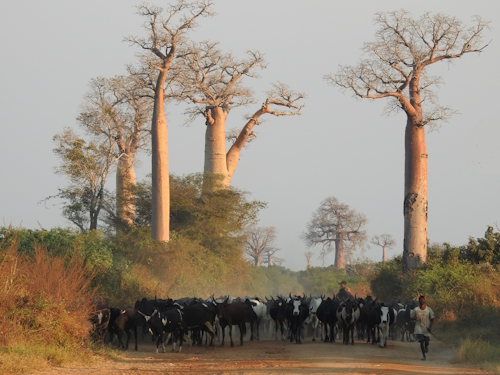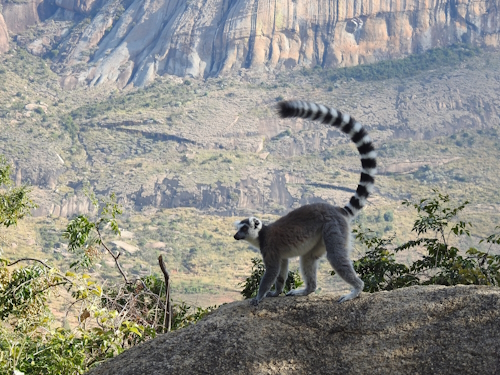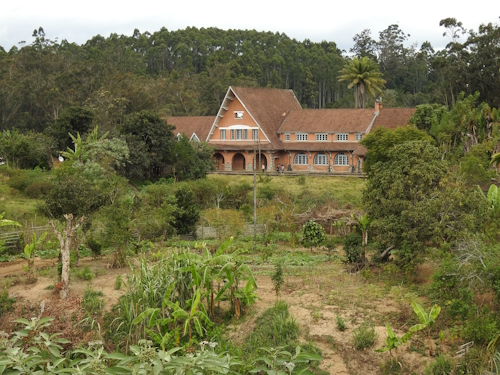Blog Countries
Top Tips for Madagascar
In June, I spent 23 days travelling around Madagascar. I saw all 3 WHS and 2 of the TWHS. I really enjoyed this unique country with its calm and friendly people, who together with the good accommodation and food options soften the impact of travelling in a country with a GDP lower than Chad, the DRC and Haiti. Herewith are some tips for travelling to Madagascar as a WH Traveller.
1. Tick the WHS and you get a balanced itinerary
There are few countries where the WHS cover the essence so well, and in a relatively low number of sites (3). Madagascar’s ecoregions are divided between the wet East and the dry West – each has a natural WHS. And Ambohimanga is the most important cultural-historic site on the island. I see future potential mostly outside of the current T List: a cultural landscape featuring the carved wooden houses of the Zafimaniry ethnic group, or one centered around the vanilla production. Antsirabe and Andasibe (Photo 3) have wonderful French-colonial railway stations. Or natural sites such as the dramatic Cirque Rouge or the bird-friendly Ankarafantsika NP. I surely would support more cultural WHS as it would diversify travel and avoid for Madagascar to become a 'safari country' where wealthy tourists stay in isolated luxury resorts while the local population cannot profit.
2. Don't plan too tightly
To see the 3 WHS you realistically need 2 weeks. If you want to see more, have some beach time, or view different lemur species, it is better to allocate 3 weeks. But even then you will only have covered part of the country. Madagascar does slowly wear you down because of the time-consuming and tiring transport and the hygienic circumstances in the public space, so plan plenty of rest days as well.
3. Don't overpay for tours
As it is not possible to do the 3 WHS only by public transport (especially Tsingy isn’t), you will have to at least hire someone for part of your stay in Madagascar. Around Antananarivo, you can get away with using only public transport.
Organized tours from abroad are eyewatering expensive, especially from UK/US providers (Dutch companies are able to do it on a shoestring and I encountered one of their large groups even crossing the Tsiribihina River towards Tsingy). If you cut out the middle man and go directly to the more reputed Malagasy providers, they still do not hesitate to quote up to 400 EUR a day for a private car+driver and hotel. This while the best 3 star hotels only cost around 30 EUR a night and the average Malagasy earns only 50 EUR a month.
The main cost drivers are transport and the risk involving that transport (delays due to blocked roads or ferries not running, cars breaking down, cancelled flights). The transport of choice is the 4WD, although it really isn’t necessary everywhere (the main roads in the Central Highlands can be done without). Those 4WDs are expensive to purchase, maintain and run, and are in the hands of the happy few of rich Malagasy who enjoy this demand.
So the trick is to scout around for smaller Malagasy entrepreneurs who can still deliver safely. I worked with two of them, at a cost of 150-200 EUR a day. While comparing offers, do look closely at what is included: some quotes are without fuel (which is as expensive in Madagascar as anywhere in the world), and others even include park and local guide fees (which can add up). Be aware that those smaller companies will not be able to cover high unexpected costs such as a new flight ticket, so if you’re particularly risk averse (actually: enjoy blaming someone else when a risk materializes) go for one of the overpriced foreign tour operators with whom you can argue after your trip. But if you are risk averse, Madagascar isn’t for you anyway.
4. Go and see those lemurs
Madagascar is a top favourite among mammalwatchers as it contains no less than 108 lemur species (and a few other mammals as well). Every national park or nature reserve seems to have its own species, which provides variety and easy ticking. The species differ quite a bit from each other – from the playful ringtailed lemurs living in large groups to the majestic indri moving around only with their own nuclear family. Compared to their closest relatives, the monkeys, I found the lemurs calmer and less exciting in behaviour. Some species have incredibly cute teddy bear-like faces (Great Bamboo Lemur), others sport the ears of Mickey Mouse (Indri) or can jump powerfully using their hindlegs (Sifaka). As only small patches of forest remain in Madagascar, all lemur species are endangered - this was my first time seeing so many of even critically endangered species.
Lemurs inhabit both Malagasy natural WHS, but I’d recommend seeing some more at the lovely Anja Community Reserve (great setting, see Photo 2) and at Andasibe where there are effectively 4 parks/reserves that you can visit, with good views of Indri and Diademed Sifaka for example. Madagascar also has no shortage of ‘lemur parks’, rescue centers, and roadside attractions featuring tame or captured animals, but these should not be endorsed.
Els - 9 July 2023
Comments
Dennis N. 13 July 2023
Thanks for the Madagascar summary and earlier reviews. I had a trip booked in 2020 with the usual results for that year, but I haven't fit rescheduling it into my plans. It's interesting to see your mostly independent tour as I had resigned myself to a decent packaged tour that I had found.
Els Slots 10 July 2023
As far as I am aware, there are only small numbers of them left in the area around the Avenue of the Baobabs. I found the latter a bit of a tourist trap - fully natural and picturesque of course, but I don't see a 'higher' global value.
Jay T 9 July 2023
Great tips! I’ve enjoyed reading your reviews of Madagascar. In regard to potential future sites for Madagascar, what were your thoughts regarding a natural site protecting the baobab (the giant baobab in particular)?


